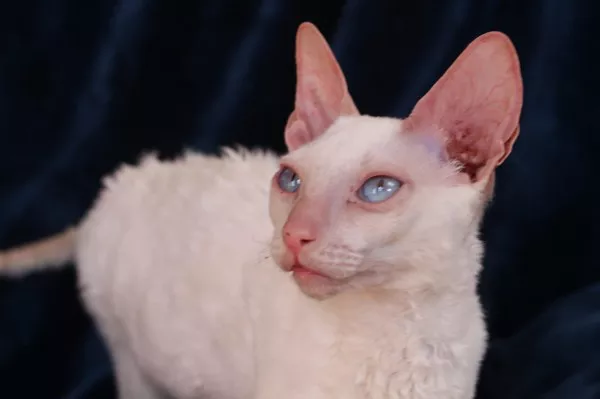Calico cats, with their distinctive tricolor coat patterns, captivate cat enthusiasts with their unique charm. However, some calico cat owners may find themselves puzzled by a particular behavior – biting. In this exploration, we delve into the fascinating world of calico cats and attempt to understand why some of them display a penchant for biting. From the genetics behind their coat patterns to individual personality traits, various factors contribute to this behavior. By unraveling the enigma of why calico cats bite, we hope to shed light on this intriguing aspect of feline behavior.
Understanding Calico Cats
Genetic Marvels:
Calico cats are often hailed as genetic marvels due to their tricolor coat patterns, typically comprised of white, black, and orange patches. The interplay of X and Y chromosomes, particularly in female calico cats, leads to the mosaic of colors that define these feline beauties.
1. X Chromosome and Coat Colors: The genes responsible for coat colors in cats are located on the X chromosome. Female cats possess two X chromosomes (XX), and males have one X and one Y chromosome (XY). The random inactivation of one X chromosome in each cell contributes to the unique patterns observed in calico cats.
2. Orange Color and Gender: The gene for the orange color is located on the X chromosome. Female calico cats may express both black and orange colors due to having two X chromosomes. Male calico cats are rare and often possess an extra X chromosome, resulting in a genetic anomaly known as Klinefelter syndrome.
Individual Personalities:
Just like humans, cats have distinct personalities shaped by a combination of genetics and environmental factors. Calico cats, while sharing certain traits common to their coat patterns, can have individual personalities that range from outgoing and playful to more reserved and laid-back.
1. Playful Antics: Many calico cats are known for their playful nature. They may engage in various activities, from batting at toys to climbing cat trees, showcasing their energetic and curious sides.
2. Territorial Instincts: Cats, in general, can be territorial creatures. Calico cats may display behaviors related to marking and defending their territory, especially in multi-pet households or when encountering unfamiliar scents.
Communication Through Biting:
Cats communicate through a variety of behaviors, and biting is one method they use to express themselves. Understanding the context and motivation behind a calico cat’s biting behavior can provide insights into their emotional state and needs.
1. Play Biting: Playful biting is a common behavior in cats, especially kittens. It is a way for them to practice hunting skills and socialize with their littermates. Calico kittens may engage in play biting as part of their developmental stage.
2. Affectionate Biting: Some cats use gentle nibbling or biting as a form of affection. It can be a way for them to express love and bond with their human companions. Calico cats may display this behavior when seeking attention or showing affection.
3. Stress or Anxiety: Biting can also be a response to stress or anxiety. Changes in the environment, such as moving to a new home or the introduction of a new pet, can trigger biting behaviors in calico cats. Understanding and addressing the source of stress can help mitigate this behavior.
Unraveling the Enigma: Why Calico Cats Bite
Playful Nature and Hunting Instincts:
Calico cats, like many feline companions, have a strong instinct for play. Play is essential for kittens’ development, allowing them to hone their hunting skills and coordination. Playful biting is a normal part of this developmental stage, and calico kittens may engage in gentle nibbling as they explore their surroundings and interact with their littermates.
1. Interactive Play: Engaging calico cats in interactive play sessions with appropriate toys can redirect their playful biting tendencies. Toys that mimic prey, such as feather wands or moving objects, provide an outlet for their hunting instincts.
2. Providing Playtime Outlets: Ensuring that calico cats have access to stimulating toys and regular playtime can help channel their energy in a positive way. This not only satisfies their hunting instincts but also provides mental and physical enrichment.
Affectionate Expressions Through Biting:
Calico cats, known for their individualistic personalities, may use gentle biting as a form of affectionate expression. While this behavior might seem peculiar, it is a way for cats to communicate their feelings and establish a connection with their human companions.
1. Attention-Seeking Behavior: Calico cats may resort to gentle biting when seeking attention. This can be their way of initiating interaction and expressing a desire for petting, play, or companionship.
2. Understanding Boundaries: Teaching calico cats appropriate boundaries is crucial in addressing affectionate biting. If a cat’s biting becomes too intense, redirecting the behavior to alternative forms of interaction, such as gentle petting or interactive play, can help establish healthy boundaries.
Territorial Behaviors and Biting:
Cats, including calico cats, can be territorial creatures. Biting may serve as a means of marking territory or expressing discomfort in response to perceived intrusions or changes in their environment.
1. Introducing New Pets: The introduction of new pets, whether feline or otherwise, can trigger territorial behaviors in calico cats. Biting may be a defensive response to perceived threats to their territory. Gradual introductions and providing separate spaces for each pet can help ease the transition.
2. Changes in the Environment: Environmental changes, such as moving to a new home or rearranging furniture, can disrupt a calico cat’s sense of territory. Biting may be a manifestation of stress or anxiety in response to these changes. Creating a stable and comforting environment can help alleviate such behaviors.
Stress and Anxiety Management:
Stress and anxiety can manifest in various ways in cats, and biting is one possible expression of underlying emotional distress. Calico cats may be particularly sensitive to changes in their routine or environment, and understanding the sources of stress is essential in managing their well-being.
1. Identifying Stressors: Observing the calico cat’s behavior and identifying potential stressors is crucial. This could include new household members, changes in routine, or the presence of outdoor animals. Addressing these stressors can help mitigate biting behaviors.
2. Providing Safe Spaces: Calico cats may benefit from having designated safe spaces within the home where they can retreat and feel secure. These spaces should include comfortable bedding, hiding spots, and access to resources such as food, water, and litter boxes.
3. Calming Techniques: Utilizing calming techniques, such as pheromone diffusers or calming sprays, can help create a soothing environment for calico cats. These products release synthetic pheromones that mimic the calming scents cats produce naturally.
Conclusion
The enigma of why calico cats bite encompasses a variety of factors, including their playful nature, individual personalities, communication styles, and responses to changes in their environment. By understanding the unique characteristics of calico cats and recognizing the context in which biting occurs, cat owners can navigate this behavior with patience and empathy.
It’s essential to approach biting behaviors with a holistic understanding of the cat’s well-being, addressing physical, mental, and environmental factors. Whether playfully nibbling during interactive sessions, expressing affection through gentle biting, or reacting to changes in their territory, calico cats communicate through behavior. By unraveling the enigma of why calico cats bite, we can foster deeper connections with these fascinating feline companions and create harmonious living environments that cater to their unique needs and personalities.


























